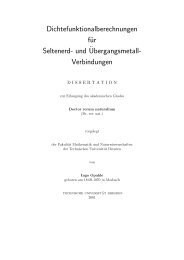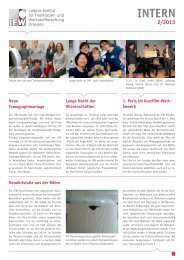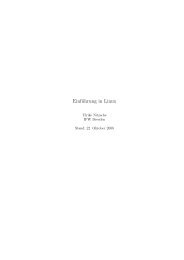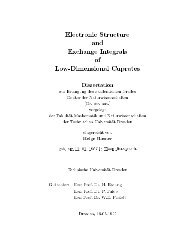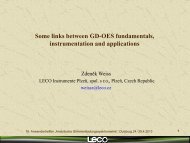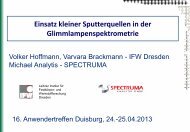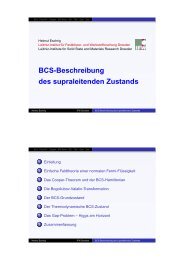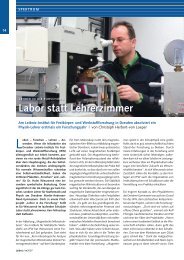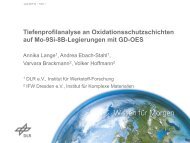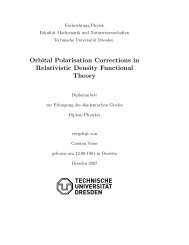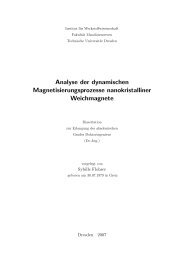ALBERTO BOLLERO REAL
ALBERTO BOLLERO REAL
ALBERTO BOLLERO REAL
Create successful ePaper yourself
Turn your PDF publications into a flip-book with our unique Google optimized e-Paper software.
2.2 Magnetic properties<br />
(i) The rare-earth (R) series<br />
The rare-earth series presents an incomplete filling of the 4f shell. The number of<br />
electrons in the inner 4f shell varies from 0 to 14 through the series La (atomic number in<br />
the periodic table: Z = 57) to Lu (Z = 71). The total magnetic moment of an R-atom has<br />
both orbital and spin components. However the 4f shell is not the outermost shell of the<br />
atom. Figure 2.2 illustrates the position of the 4f shell for Nd (Z = 60) where the 3<br />
electrons with unpaired spin are localised. The R-R exchange-coupling between two R<br />
atoms in a solid is indirect because the direct overlap between the 4f shells of adjacent<br />
rare-earth atoms is negligible. The resulting weak magnetic interaction with the 4f<br />
electrons of neighbouring atoms, results in low Curie temperatures of the ferromagnetic<br />
rare-earth metals; in fact, all of them have a T C below room temperature (only Gd has a<br />
Curie temperature as high as ambient temperature, T C = 20°C).<br />
Nd<br />
Fe<br />
3d shell<br />
4f shell<br />
5d shell<br />
0.21nm<br />
0.36nm<br />
0.25nm<br />
Fig. 2.2: Positions of the unpaired electron shells in Nd and Fe atoms (from Coey [3]).<br />
(ii) The transition-metal (T) elements: Fe, Co and Ni<br />
There are three ferromagnetic transition elements: Fe, Co and Ni. The 3d electrons of<br />
these atoms are localised in the outer shell (see Fig. 2.2). Hence in solids the 3d electrons<br />
are considerably less localized than the 4f electrons of the rare earths. Therefore the orbital<br />
momentum of T atoms or ions is nearly completely removed (“quenched”) by the<br />
interaction in the solid which, of course, is not rotationally invariant and does not allow the<br />
orbital momentum to be a good quantum number. Usually the (spin) magnetism of the T<br />
elements in metals and intermetallic compounds is described by delocalised electrons. Fe is<br />
7



